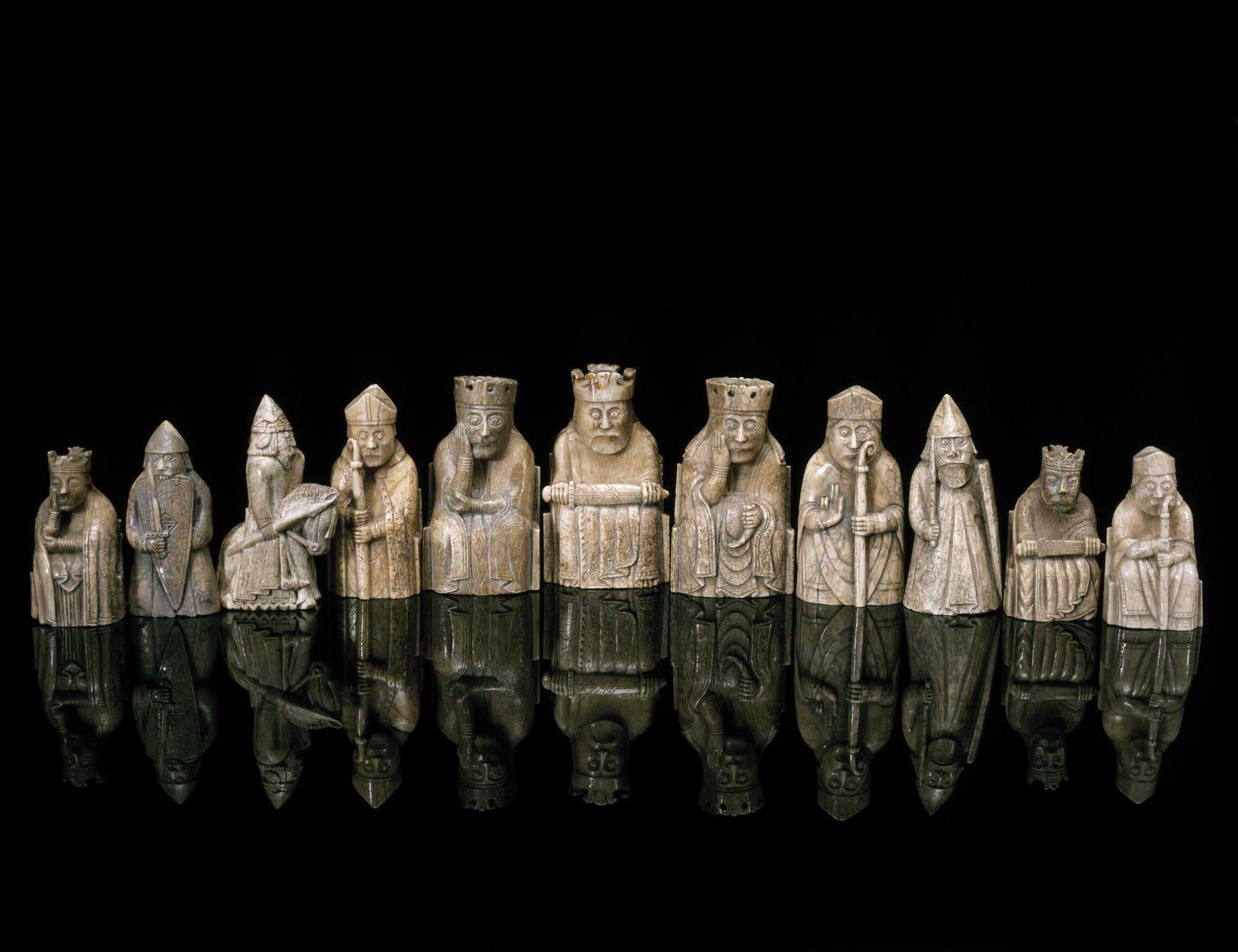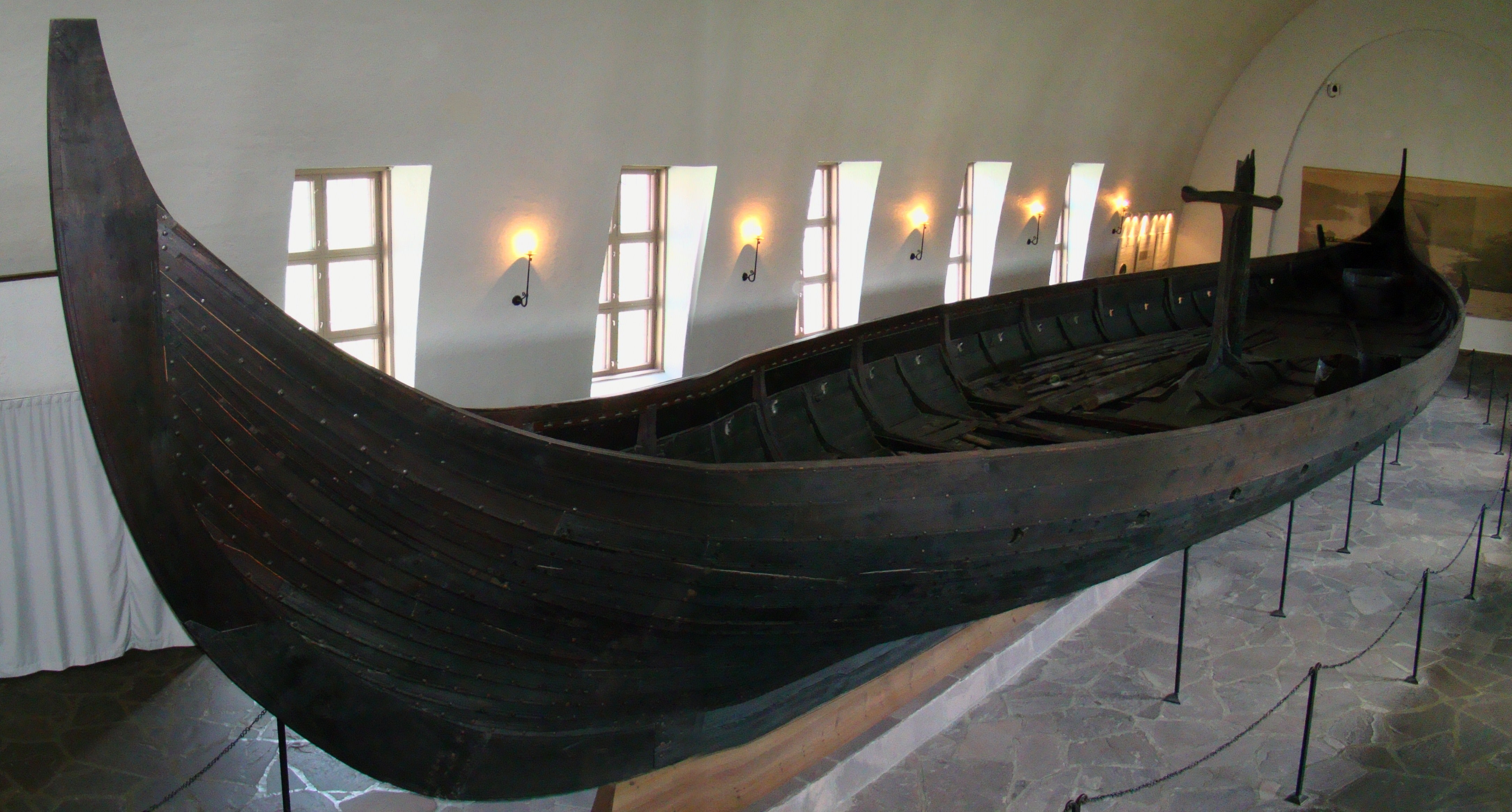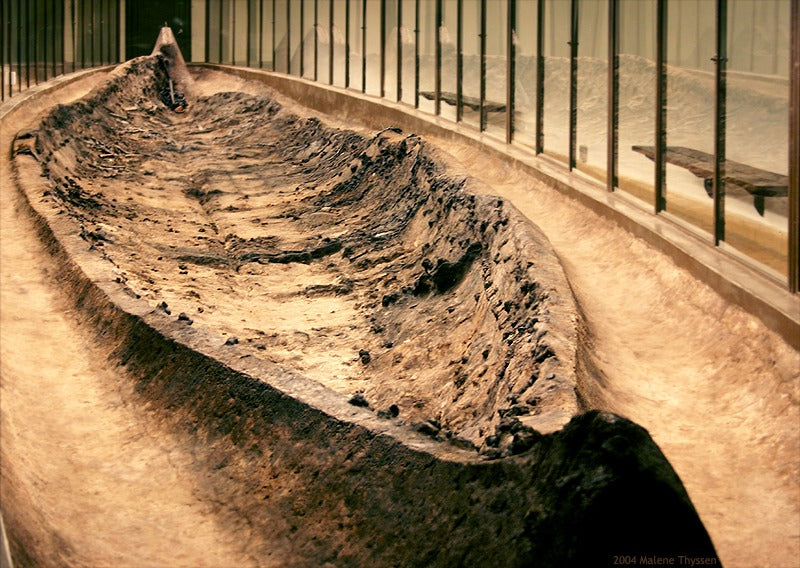
The Lewis Chessmen: Ivory Time Travelers from the Viking Age
Have you ever imagined holding a piece of history in your hands? A chess piece that's witnessed over 800 years of human civilization? Well, that's exactly what the Lewis Chessmen offer – a tangible connection to our medieval past. These fascinating artifacts aren't just game pieces; they're windows into a world long gone, telling tales of Norse craftsmen, medieval society, and the enduring appeal of the game of kings.
Discovery and Historical Context
Picture this: It's 1831, and you're strolling along the windswept beaches of the Isle of Lewis in Scotland's Outer Hebrides. Suddenly, you spot something unusual protruding from a sand dune. This was the reality for Malcolm MacLeod, who stumbled upon one of the most significant archaeological finds of the 19th century – the Lewis Chessmen.
The hoard consisted of 93 intricately carved chess pieces, along with other gaming pieces. But why were they buried on this remote Scottish island? That's a question that still puzzles historians today.
Dating and Origin Theories
Now, let's play detective. When were these chessmen created, and by whom? Most experts agree they date back to the 12th century, but their exact origin is a subject of heated debate. Some argue for Norwegian craftsmanship, pointing to the strong Norse influence in the Hebrides during that period. Others suggest they might have been made in Trondheim, Norway, a center of medieval art.

Knight on a stout pony by NMS, CC BY-SA 4.0
But here's where it gets interesting – some scholars propose an Icelandic origin, based on the presence of bishops in the set. You see, the bishop piece was a relatively new addition to chess at the time, and Iceland was one of the first places to adopt it. Intriguing, right?
Craftsmanship and Materials
Let's talk about what these chess pieces are made of. Imagine a medieval craftsman, sitting by a fire in a Norse settlement, carefully carving these figures from walrus ivory and whale teeth. It's a testament to the resourcefulness of these northern artisans, using materials readily available in their harsh environment.
The use of these materials also gives us clues about trade routes and resources in the medieval North Atlantic. It's like each chess piece is a little history book, telling us about the economy and craftsmanship of the time.
Artistic Style and Influences
Now, take a closer look at the pieces. Notice the blend of Norse and Celtic artistic styles? It's like a cultural fusion captured in ivory. The characters are stocky and serious-looking, with distinctive bulging eyes that give them an almost comical appearance to our modern eyes.

Decoration carved on back of a queen's throne at BM by NMS, CC BY-SA 4.0
But don't let their quirky looks fool you – these pieces represent the height of medieval Scandinavian art. They're not just game pieces; they're miniature sculptures, each with its own personality and story to tell.
The Characters of the Lewis Chessmen

Kings and Queens
Let's meet the royal couple of our chess set. The kings sit on ornate thrones, stroking their long beards thoughtfully. They wear crowns and hold swords across their laps – a picture of medieval kingship.

King and Queen by NMS, CC BY-SA 4.0
The queens, on the other hand, are a bit more dramatic. They rest their heads on their hands in a gesture that some interpret as worry or contemplation. Others see it as a sign of wisdom. What do you think? Are these queens fretting over their kingdoms, or pondering their next strategic move?
Bishops and Knights
Now, let's talk about the clergy and the cavalry. The bishops are easily recognizable by their mitres and croziers – the traditional headgear and staff of Christian bishops. Remember what I said earlier about the significance of bishops in dating these pieces?

Row of bishops at the back and then knights, among a selection pieces on display at BM, CC BY-SA 2.0
The knights are my personal favorites. They're not riding horses like in modern chess sets. Instead, they're depicted as Norse warriors, astride stocky ponies with shields and spears at the ready. It's like a snapshot of a Viking raid frozen in ivory!
Rooks and Pawns
The rooks in the Lewis set are particularly interesting. Instead of castle towers, they're depicted as berserkers – fierce Norse warriors known for fighting in a trance-like fury. These guys are biting their shields, a historical detail that adds an extra layer of authenticity to the set.

Front and side view of rook (berserker) piece by NMS, CC BY-SA 4.0
As for the pawns, they're simple round pieces. Not very exciting, you might think, but their plain design actually tells us something about medieval society and the value placed on common soldiers.
Cultural Significance
The Lewis Chessmen aren't just beautiful artifacts – they've had a lasting impact on the game of chess itself. They're one of the earliest examples of the modern chess set as we know it today. The inclusion of bishops, for instance, shows the evolution of the game from its earlier forms.
Moreover, these pieces give us insight into how chess spread across Europe, adapting to local cultures along the way. It's fascinating to think about how a game that originated in India found its way to the far corners of medieval Europe, isn't it?
Influence on Popular Culture
But the influence of the Lewis Chessmen extends far beyond the world of chess enthusiasts and historians. Have you seen the movie "Harry Potter and the Philosopher's Stone"? Remember the giant wizard's chess scene? Those pieces were inspired by the Lewis Chessmen!
These medieval characters have captured the public imagination, appearing in everything from cartoons to video games. They've become a symbol of Scotland's rich history and a popular souvenir item. It's quite remarkable how these 12th-century game pieces continue to resonate with us in the 21st century.
British Museum and National Museum of Scotland
So, where can you see these fascinating pieces today? Well, they're shared between two prestigious institutions – the British Museum in London and the National Museum of Scotland in Edinburgh.

The majority of the hoard (82 pieces) resides in the British Museum, where they're one of the most popular exhibits. The remaining 11 pieces are in Edinburgh, where they're celebrated as a national treasure.
Preservation Challenges
But displaying these ancient artifacts isn't without its challenges. Ivory is a delicate material, sensitive to changes in temperature and humidity. Imagine trying to maintain the perfect environment for objects that have survived for over 800 years!
Conservators use state-of-the-art techniques to preserve these priceless pieces, ensuring that future generations can continue to marvel at them. It's a delicate balance between making them accessible to the public and protecting them from damage.
The Mystery of the Missing Pieces
Now, here's where our story takes a mysterious turn. The Lewis hoard isn't a complete set – there are pieces missing. But why? Were they lost over time? Or were they never there to begin with?

Some theories suggest that the hoard might have been a merchant's stock, explaining the uneven numbers. Others propose that some pieces might have been lost before or during the discovery. It's like a medieval mystery waiting to be solved!
The Lost Chessmen
In 2019, a single Lewis Chessman piece that had gone missing for almost 200 years was discovered in a drawer and sold at auction for £735,000. This exciting find reignited interest in the missing pieces. Could there be more out there, waiting to be discovered? It's tantalizing to think that part of this ancient set might be hiding in someone's attic or buried in a forgotten museum storage room.
Conclusion
The Lewis Chessmen are more than just game pieces – they're time travelers, bringing the medieval world to life in our hands. From their mysterious discovery to their continued influence on popular culture, these ivory figures have captured our imagination for nearly two centuries.
As we've explored their history, craftsmanship, and significance, I hope you've gained a new appreciation for these remarkable artifacts. They stand as a testament to the skill of medieval craftsmen, the complex society of their time, and the enduring appeal of the game of chess.
The next time you see a chess set, why not take a moment to appreciate its design? You might just see echoes of those ancient Norse warriors, contemplative queens, and shield-biting berserkers. After all, every chess game we play today is, in a way, a continuation of a tradition that the Lewis Chessmen have been part of for over 800 years.
FAQs
- How many Lewis Chessmen pieces were originally discovered?
The original discovery in 1831 included 93 chess pieces, along with other gaming pieces.
- What material are the Lewis Chessmen made from?
The Lewis Chessmen are primarily made from walrus ivory, with some pieces carved from whale teeth.
- Where can I see the Lewis Chessmen in person?
The majority of the pieces are on display at the British Museum in London, with a smaller number exhibited at the National Museum of Scotland in Edinburgh.
- Are all the Lewis Chessmen accounted for?
No, there are still some pieces missing from the set. In 2019, a single piece that had been missing for almost 200 years was rediscovered and sold at auction.
- How have the Lewis Chessmen influenced modern culture?
The Lewis Chessmen have appeared in various forms of popular media, including the Harry Potter films. They've also inspired numerous replicas and souvenirs, becoming iconic symbols of medieval art and chess history.
References
Caldwell, D. H., Hall, M. A., & Wilkinson, C. M. (2009). The Lewis Chessmen Unmasked. National Museums Scotland.
Brown, N. C. (2015). Ivory Vikings: The Mystery of the Most Famous Chessmen in the World and the Woman Who Made Them. St. Martin's Press.
Robinson, J. (2004). The Lewis Chessmen (Objects in Focus). British Museum Press.
Murray, H. J. R. (1913). A History of Chess. Clarendon Press.
Taylor, M. (2019). The Lewis Chessmen and What Happened to Them. British Museum Press.
Stratford, N. (1997). The Lewis Chessmen and the enigma of the hoard. British Museum Press.
McLees, C. (2014). The Late Norse Settlement at Trondheim and the Lewis Chessmen. In S. H. Fuglesang & D. M. Wilson (Eds.), The Lewis Chessmen: New Perspectives (pp. 11-27). National Museums Scotland.
Tait, H. (1989). Pilgrim-signs and Thomas, Earl of Lancaster: A Re-dating of the Lewis Chessmen. The British Museum Quarterly, 53(1), 11-17.
Kluge-Pinsker, A. (1991). Schach und Trictrac: Zeugnisse mittelalterlicher Spielfreude in salischer Zeit. J. Thorbecke.
Madden, F. (1832). Historical remarks on the introduction of the game of chess into Europe and on the ancient chessmen discovered in the Isle of Lewis. Archaeologia, 24, 203-291.
"Lewis Chessmen 2" by Averain is licensed under CC BY 2.0.
"King" by failing_angel is licensed under CC BY-NC-SA 2.0.
"National Museum of Scotland at night 04" by byronv2 is licensed under CC BY-NC 2.0.








